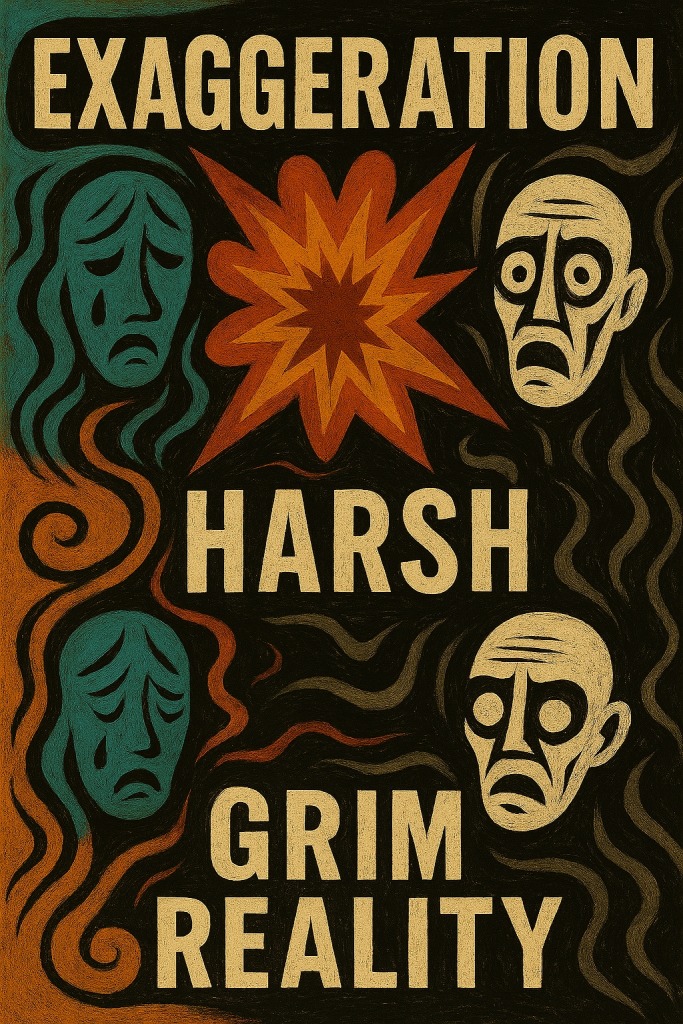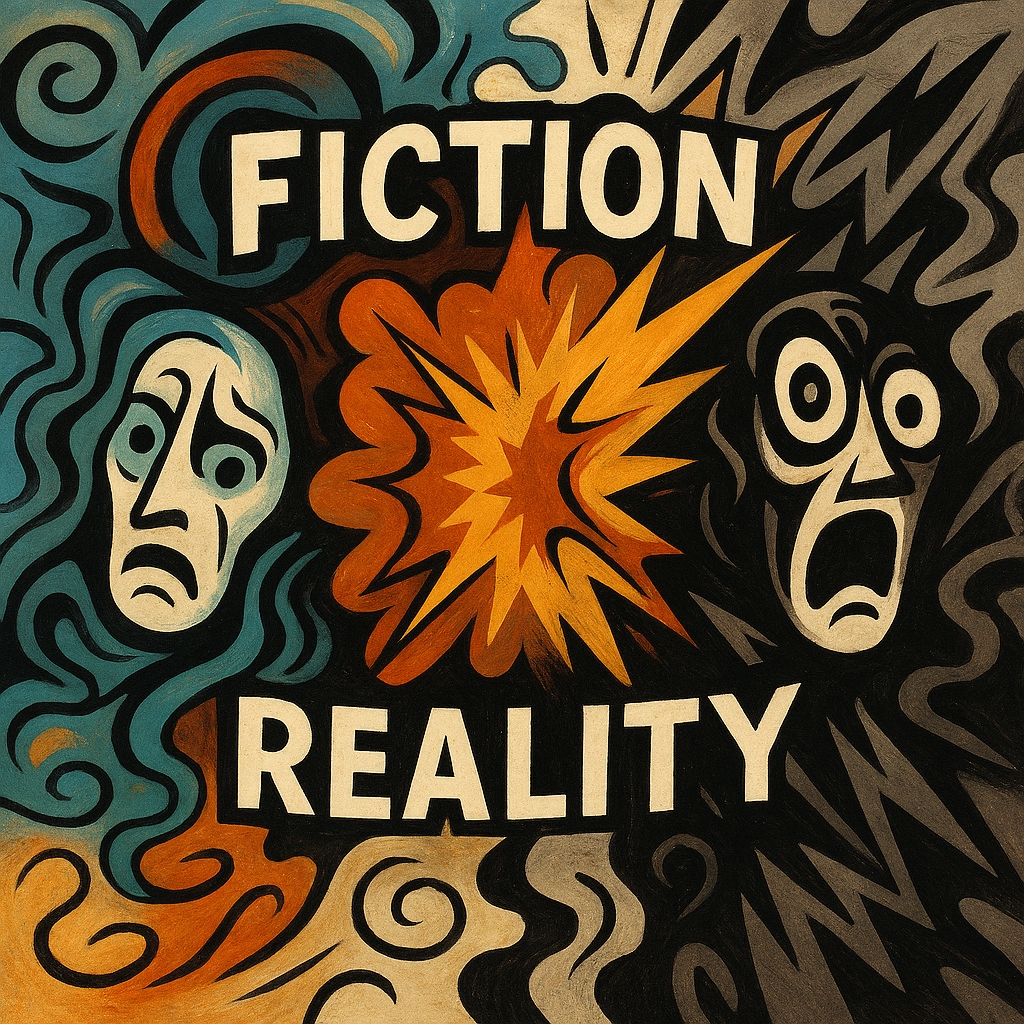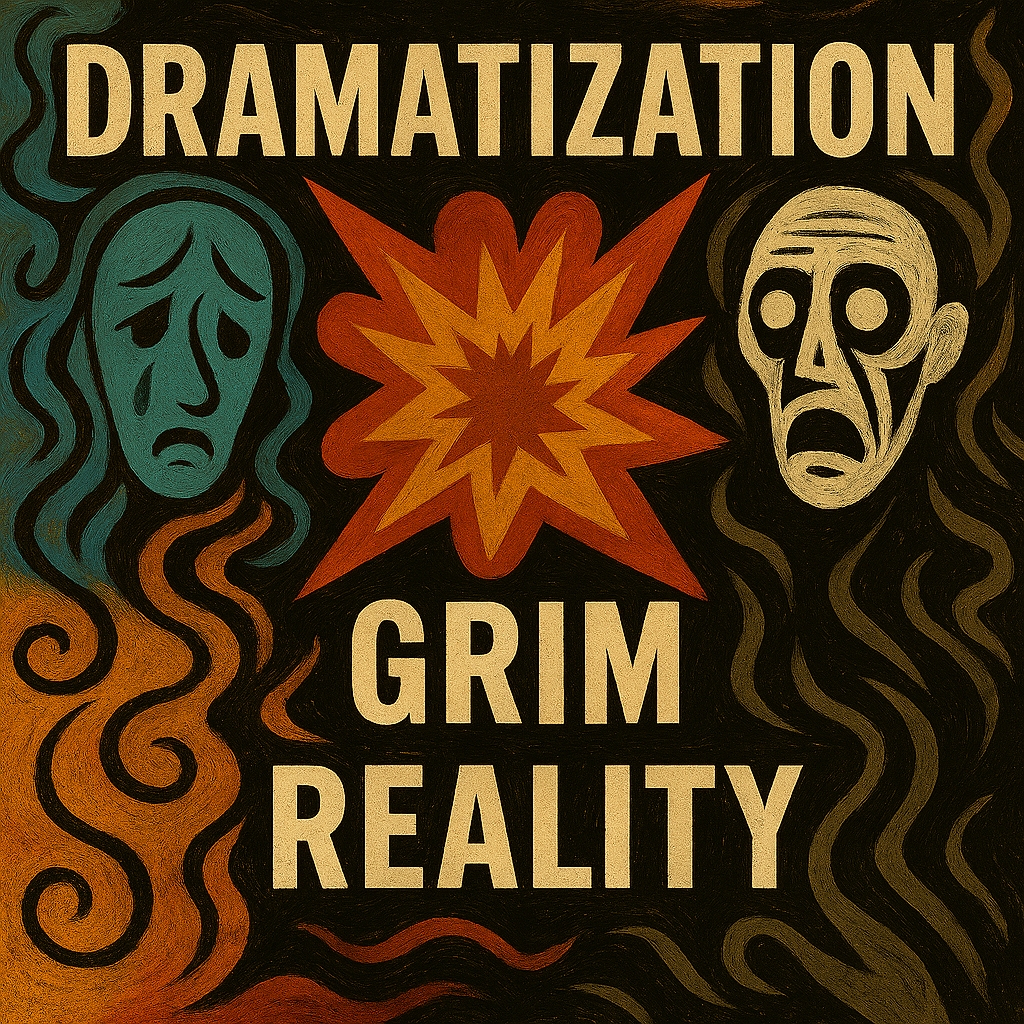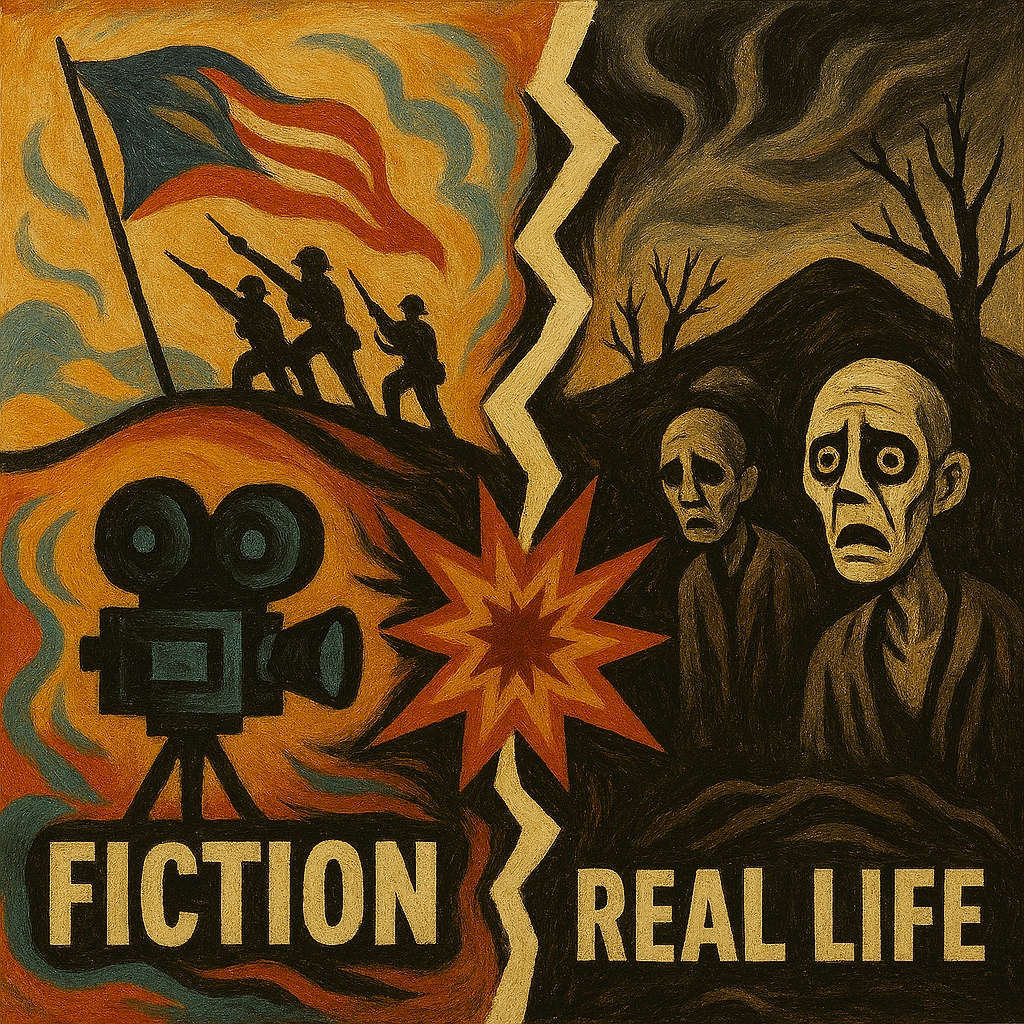Devastating Fiction Vs. Reality Dramatic Movies
Why Some Movies Are More Dramatic Than Reality and Why Reality Can Be More Devastating Than Film
Fiction Vs. Reality
Fiction Vs. Reality is always a hard idea to balance. Films based on true events often walk a fine line between factual representation and dramatic enhancement. While some stories are softened to suit audience expectations, others are exaggerated to heighten emotional impact. This tension between truth and dramatization raises ethical questions about how history is portrayed.
Real-life events are frequently more complex, ambiguous, and emotionally devastating than their cinematic counterparts. Filmmakers must navigate narrative structure, audience psychology, and commercial pressures when adapting reality. The result is a version of truth that may be emotionally resonant but factually incomplete.
Some films amplify drama to create catharsis, while others understate trauma to avoid overwhelming viewers. The factual reasons behind cinematic exaggeration and the ethical implications of distorting reality. It also examines why certain real events resist dramatization due to their scale, complexity, or emotional weight.

Narrative Compression and Structural Necessity
Real events unfold over days, months, or years, often without clear narrative arcs. Films require a beginning, middle, and end to maintain viewer engagement and coherence. To achieve this, filmmakers compress timelines and simplify sequences of events. This process often involves omitting key details or merging multiple characters into one.
Narrative compression is a practical necessity in screenwriting, not a deliberate distortion. However, it can lead to misrepresentation of historical causality and individual contributions. The simplification of complex events may result in a skewed understanding of history. Audiences may internalize these streamlined versions as factual truth. The need for narrative clarity often overrides the messiness of real life. This structural constraint is one of the primary reasons films deviate from reality.
Emotional Amplification and Audience Psychology
Films are designed to evoke strong emotional responses through visual and auditory cues but also balancing Fiction Vs. Reality. Music, pacing, and cinematography are used to heighten tension and empathy. Neuroscientific studies show that emotionally charged scenes activate memory and emotional processing centers in the brain. This makes dramatized content more memorable than factual accounts. Filmmakers use emotional amplification to ensure audience engagement and retention. Real events may lack the emotional rhythm required for cinematic storytelling. To compensate, creators may exaggerate conflict, romance, or resolution. These enhancements are often based on psychological models of audience behavior. Emotional manipulation is not inherently unethical but must be transparent. The psychological impact of dramatization can shape public perception and historical memory.

Selective Representation and Focalization
Real events involve multiple perspectives, actors, and outcomes. Films must choose a focal point to guide the narrative and emotional arc. This selection process inherently excludes certain voices and details. For example, a film about a war may focus on a single soldier while ignoring broader geopolitical dynamics. Focalization simplifies complexity but risks erasing important context. The choice of protagonist often reflects cultural or ideological biases. Selective representation can reinforce dominant narratives while marginalizing others. This editorial decision shapes how audiences interpret historical events. Ethical storytelling requires awareness of what is omitted and why. Focalization is a necessary tool but must be used responsibly. It determines whose story is told and how it is remembered.
Commercial Pressures and Market Demands
Films are commercial products subject to market expectations and profitability goals. Studios often pressure filmmakers to enhance drama for box office appeal. This can lead to the inclusion of fictional subplots, exaggerated conflicts, or romanticized endings. Market research influences which stories are told and how they are framed. Films that conform to popular genres or emotional formulas are more likely to succeed financially. This commercial incentive can distort historical accuracy in favor of entertainment value. The tension between artistic integrity and economic viability is a persistent challenge. Ethical filmmakers must balance storytelling with factual responsibility. Commercial pressures are not inherently unethical but can lead to problematic distortions. Audiences should be aware of these influences when interpreting dramatized content.
Legal Constraints and Defamation Risks
Portraying real individuals in film involves legal considerations, including defamation and privacy rights. Filmmakers may alter names, composite characters, or fictionalize events to avoid legal liability. These changes can protect creators but also obscure factual truth. Legal constraints often shape how stories are told and which details are included. Defamation lawsuits have been filed against films that misrepresent real people, such as in the case of “Richard Jewell.” The legal boundary between fiction and libel is complex and context-dependent. Ethical dramatization requires thorough fact-checking and legal consultation. Transparency about fictional elements can mitigate legal and ethical risks. Legal constraints are a structural factor in cinematic storytelling. They influence both narrative choices and audience interpretation.

Cultural Bias and Narrative Framing
Films reflect the cultural lens of their creators, which can lead to biased representations. Western filmmakers may center Western protagonists in non-Western stories, distorting historical agency. Cultural bias affects which stories are told and how they are framed. This can result in erasure, stereotyping, or oversimplification of marginalized perspectives. Narrative framing often reinforces dominant ideologies and power structures. Ethical storytelling requires cultural consultation and inclusive representation. Films like “The Last Samurai” and “The Help” have been criticized for centering white saviors in stories of non-white struggle. Cultural bias is not always intentional but has significant impact. Filmmakers must interrogate their own positionality and narrative choices. Addressing bias is essential for truthful and respectful storytelling.
Survivor Testimonies and Authenticity
Survivors of real events often critique how their experiences are portrayed in film. They may feel misrepresented, minimized, or exploited for dramatic effect. Authentic storytelling requires collaboration with those who lived the events. Survivor input adds depth, credibility, and emotional truth to cinematic narratives. Ignoring these voices can lead to ethical breaches and public backlash. Films like “Hotel Rwanda” and “The Impossible” have faced criticism for excluding survivor perspectives. Authenticity is not just about factual accuracy but emotional resonance. Survivor testimonies challenge filmmakers to honor lived experience. Ethical dramatization involves listening, consultation, and consent. These voices are essential to truthful representation.
Trauma Representation and Viewer Sensitivity
Portraying trauma in film requires ethical sensitivity and psychological awareness. Graphic depictions can retraumatize survivors or trigger vulnerable viewers. Filmmakers must balance realism with emotional impact and viewer safety. Content warnings and stylized representation are tools for ethical storytelling. Some films use metaphor or abstraction to convey trauma without graphic detail. Others confront it directly, risking emotional overload. The choice depends on audience, context, and intent. Ethical trauma representation involves consultation with psychologists and survivors. Viewer sensitivity is a critical factor in narrative design. Films must respect the emotional boundaries of their audiences.
Historical Examples of Exaggeration and Distortion
Many popular films have altered historical facts for dramatic effect. “Braveheart” exaggerated William Wallace’s role and invented romantic subplots. “The Patriot” fabricated atrocities to heighten emotional stakes. “Argo” minimized Canadian involvement in the Iran hostage rescue. “A Beautiful Mind” simplified John Nash’s mental illness for narrative clarity. “The Social Network” dramatized personal betrayals that were never confirmed. These changes were made to enhance storytelling but misinform audiences. Historical distortion can perpetuate myths and reshape cultural memory. Ethical filmmaking requires transparency about fictional elements. These examples illustrate the consequences of dramatization. They highlight the need for critical media literacy.

Events Too Devastating for Film Representation
Some real events are so horrific that no film can fully capture their impact expecially in hurtful events or things like wars. Films like “Schindler’s List” and “Hotel Rwanda” attempt to convey these horrors but must omit vast complexities. Survivors often report that no depiction feels adequate or truthful. The emotional weight of lived trauma exceeds cinematic representation. Sanitization may make stories accessible but risks dishonoring victims. Ethical storytelling must acknowledge the limits of representation. Some truths are too vast, ambiguous, or painful for film. These events challenge the boundaries of narrative and empathy. They remind us that fiction can never fully replicate reality.
Educational Impact and Public Understanding
Films based on real events often serve as educational tools for audiences. However, dramatization can lead to misinformation and historical inaccuracies. Teachers and educators use films in classrooms but must provide context and correction. “The King’s Speech” simplified therapy methods, affecting public understanding of speech disorders. “Hidden Figures” omitted key historical details, shaping perceptions of scientific history. Ethical dramatization should support—not undermine—education. Filmmakers can collaborate with historians and educators to ensure accuracy. Films should inspire curiosity and critical thinking, not passive consumption. The educational impact of cinema is profound and far-reaching. Accuracy and nuance are essential for responsible storytelling.
Disclaimers and Transparency in Storytelling
Disclaimers signal to audiences that a film includes fictionalized elements. Phrases like “based on true events” are common but often vague. More detailed disclaimers could improve transparency and ethical clarity. Filmmakers fear that too much detail may disrupt immersion or reduce emotional impact. However, transparency builds trust and encourages critical engagement. Disclaimers should evolve to meet ethical standards in media literacy. They help audiences distinguish between fact and fiction. Ethical storytelling involves clear communication about narrative choices. Disclaimers are a tool for accountability and respect. They support informed viewing and historical integrity.
Conclusion
Dramatization in film is not simply a matter of artistic license—it’s a complex interplay of narrative necessity, emotional psychology, cultural framing, legal boundaries, and ethical responsibility. While storytelling demands structure and emotional resonance, real events often resist simplification. Some are too devastating, too ambiguous, or too multifaceted to be fully captured on screen.
Others are reshaped to fit commercial formulas or cultural expectations, resulting in distortions that can mislead audiences and marginalize voices. Ethical filmmaking requires transparency, consultation, and a commitment to honoring truth—even when dramatization is necessary. Audiences must also engage critically, recognizing the difference between cinematic storytelling and historical reality. As media continues to shape public memory, the stakes of truthful representation grow higher. The challenge is not to eliminate dramatization—but to ensure it serves understanding rather than obscuring it. In the end, the power of film lies not in its ability to replicate reality, but in its potential to illuminate it responsibly.
Join the Discussion
Have you ever watched a film and later discovered the real story was very different? What do you think filmmakers owe to the truth—and to the people whose lives they portray? How do you balnce Fiction Vs. Reality? Is it neccessary to Fiction Vs. Reality in film? What do you belive will change in film in the area of Fiction Vs. Reality?
#FilmEthics #TrueStoryCinema #DramatizationVsReality #MediaLiteracy #HistoricalAccuracy #NarrativeResponsibility #SurvivorVoicesMatter #CulturalRepresentation #TraumaInFilm #StorytellingWithIntegrity #CinemaAndTruth #EthicalFilmmaking #RealEventsOnScreen #CriticalViewing #BeyondTheScreen








2 Comments